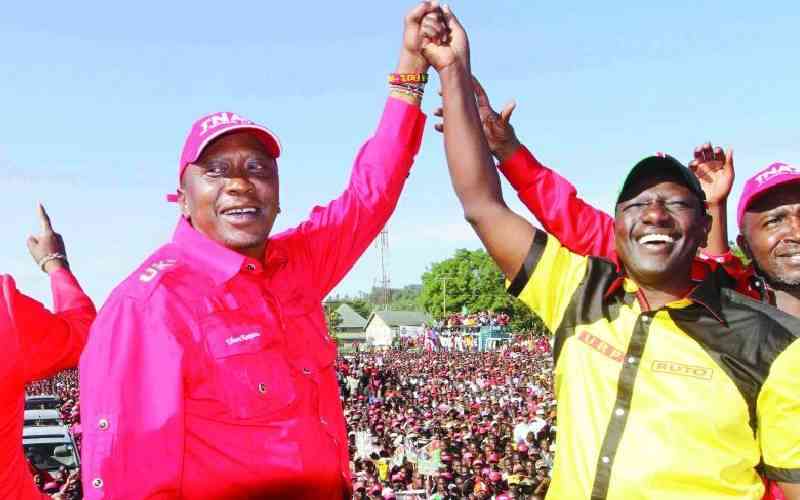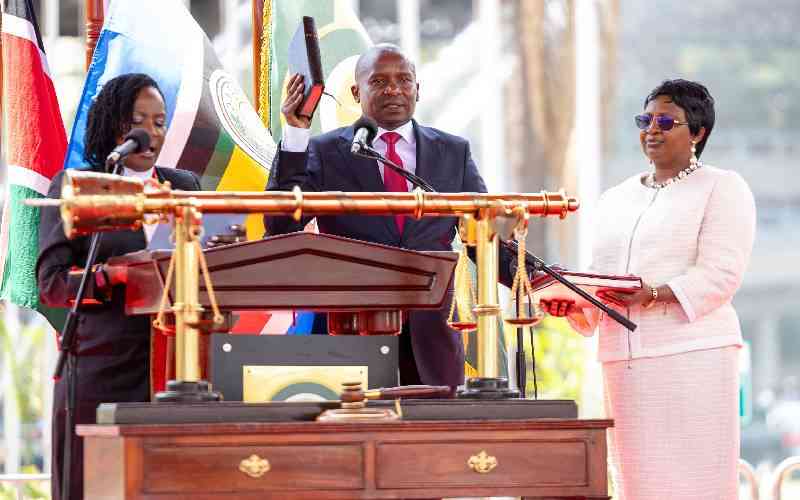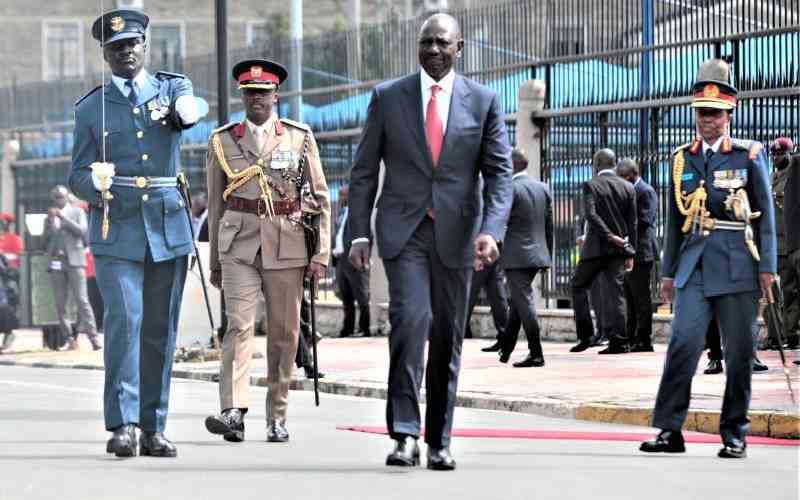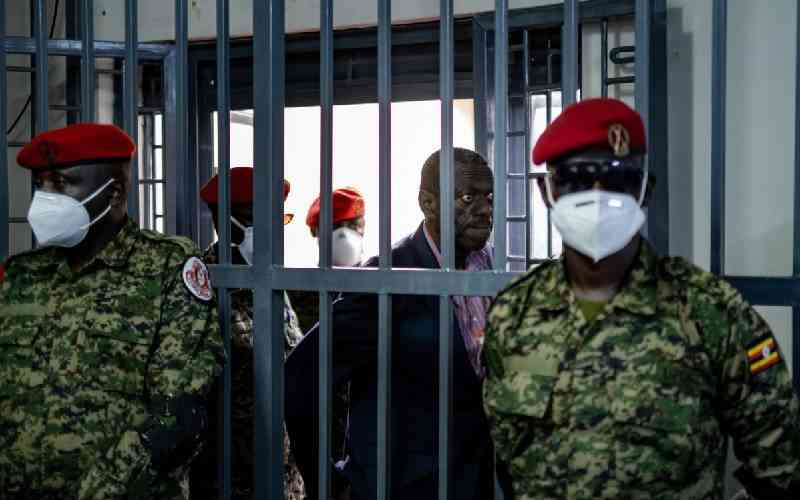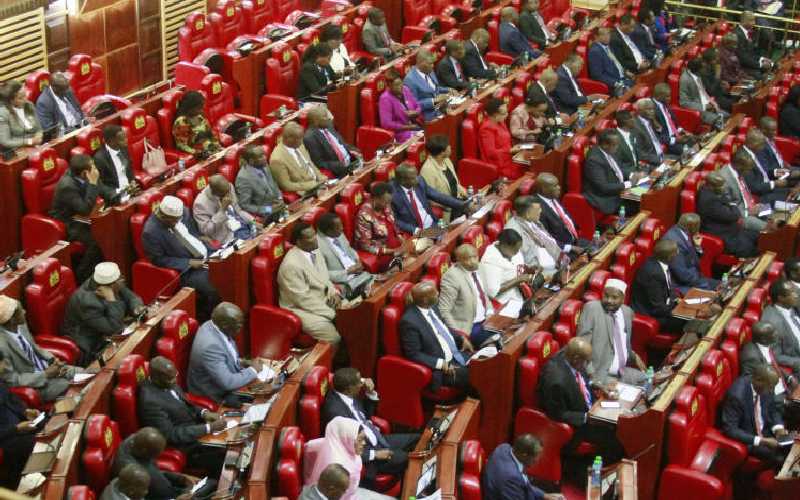
Recommendation by Chief Justice David Maraga to President Uhuru Kenyatta to dissolve Parliament on account of the alleged failure by the House to enact legislation to implement the two-thirds gender rule has caused palpable despondency and raised concerns that the recommendation pushes the country on the path of a needless constitutional crisis.
This momentous decision requires the president to respond in a manner that protects Kenya’s constitutional order given that he took an oath of allegiance to “obey, preserve, protect and defend the Constitution of Kenya” and to “protect and uphold the sovereignty, integrity and dignity of the people of Kenya”.
At a general level, it is my view that Kenya would be a laughing stock in the community of serious democracies if Uhuru were to abide by a recommendation to dissolve Parliament duly constituted with elected representatives of the people merely because political parties have not nominated 100 more women to satisfy the political preferences of female gender lobbyists and 21st century liberals.
On more profound levels, there are three things the president must consider since he has the constitutional option of acting as the recommendation requires or to disregard it.
First, before he dissolves Parliament, he must satisfy himself that the Constitution empowers him to do so. In this regard, the president should note that Article 261 of the Constitution presumes that he has power to dissolve Parliament as opposed to actually granting him the power to do so. To resolve this issue, the president will have to recall that the presidential power to dissolve Parliament under the former Constitution expired or ceased to exist after the first election under the 2010 Constitution in March, 2013.
The second thing is whether Article 261 applies to the alleged failure by Parliament to enact legislation to provide for the two-thirds gender rule. Whereas Article 81(c) of the Constitution provides that the electoral system shall comply with the principle that no more than two-thirds of the members of elective public bodies shall be of the same gender, Articles 27(8) provides that “the State shall take legislative and other measures to implement the principle that no more than two-thirds of the members of elective or appointive bodies shall be of the same gender”.
In Advisory Opinion, No 2 of 2012, a majority of the Supreme Court held that the gender principle set out in Articles 27(8) and 81(b) of the Constitution is not an enforceable right capable of immediate enforcement. The court ordered that legislative measures for giving effect to the two-thirds gender principle should be taken by August 27, 2015. Eight years after the Supreme Court declared the law, the Attorney General and Parliament have not figured out a solution to the two-thirds gender conundrum as AG Githu Muigai termed it during the hearing. The reason why the solution remains elusive is that the Constitution provided women 54 exclusive seats in the National Assembly and 18 in the Senate. The top up to comply with the gender principle was supposed to come out of the 290 elected seats in the National Assembly and the 47 elected seats in Senate.
Required Bill
Unfortunately, instead of coming up with legislative (statutory) and other measures to achieve this principle, the office of AG and the Legal Affairs Committee of the National Assembly have wrongly assumed that a constitutional amendment is the mechanism to realise this principle. Thus to date, Parliament is yet to be presented with the actual Bill required by the Constitution and failed to enact it. In my view, if the president comes to the conclusion that Parliament has not failed to enact the required Bill after it has been tabled by the State, then he cannot dissolve it.
The popular belief that the Constitution imposed on Parliament a duty to implement the gender principle within five years after its promulgation is based on legal quicksand. In truth, Article 100 of the Constitution required Parliament to enact legislation to promote representation of women, persons with disabilities, youth, ethnic minorities and marginalised communities within five years after its promulgation. The Constitution does not set a time frame for enactment of any legislation under Articles 27(8) and 81(b). However in the Supreme Court Advisory, the majority imposed the deadline of August 27, 2015 on the basis that the legislation required by Article 100 had a five year deadline.
There is nothing wrong or offensive about the deadline set by the Supreme Court. On the contrary, what is wrong is the assumption that such failure should result into the dissolution of Parliament. Given that the Fifth Schedule does not specify a deadline for the legislation envisaged by Article 27(8), it is obvious that Article 261(7) on dissolution of Parliament does not apply to non-compliance with the Supreme Court deadline.
The third issue Uhuru should consider is whether the composition of the 12th Parliament is unlawful. As adverted to above, the composition of the National Assembly and the Senate as set out in Articles 97 and 98 does not support the popular notion that Parliament would be unlawfully constituted unless the membership of National Assembly consists of 117 women and the Senate has 23 women members.
In truth, the composition of Parliament is valid if we have 54 women and the Senate has 18 women members. To say this is by no means a denial that the two-thirds gender principle is an ideal worth pursuing. The point here is that there is a difference between a right and a principle. In real terms, women have a right to 54 seats in the National Assembly but not a minimum of 117 seats in the ideal situation envisaged by the gender principle. Unless and until Uhuru is satisfied that Parliament is unlawfully constituted, he cannot exercise the powers to dissolve it that Article 261 presumes he has. The last president who had this power was Mwai Kibaki.
-The writer is a constitutional lawyer
Stay informed. Subscribe to our newsletter
 The Standard Group Plc is a
multi-media organization with investments in media platforms spanning newspaper
print operations, television, radio broadcasting, digital and online services. The
Standard Group is recognized as a leading multi-media house in Kenya with a key
influence in matters of national and international interest.
The Standard Group Plc is a
multi-media organization with investments in media platforms spanning newspaper
print operations, television, radio broadcasting, digital and online services. The
Standard Group is recognized as a leading multi-media house in Kenya with a key
influence in matters of national and international interest.
 The Standard Group Plc is a
multi-media organization with investments in media platforms spanning newspaper
print operations, television, radio broadcasting, digital and online services. The
Standard Group is recognized as a leading multi-media house in Kenya with a key
influence in matters of national and international interest.
The Standard Group Plc is a
multi-media organization with investments in media platforms spanning newspaper
print operations, television, radio broadcasting, digital and online services. The
Standard Group is recognized as a leading multi-media house in Kenya with a key
influence in matters of national and international interest.


